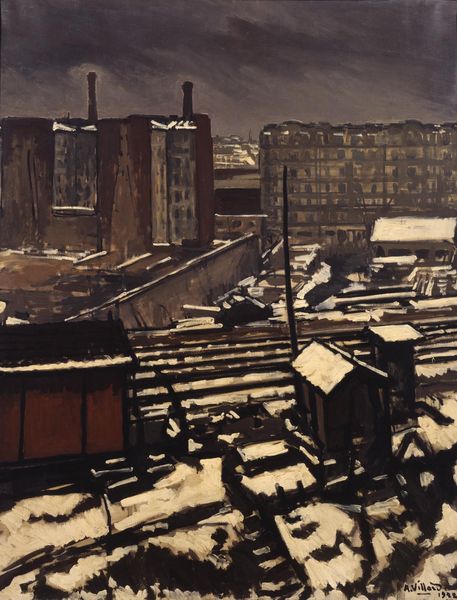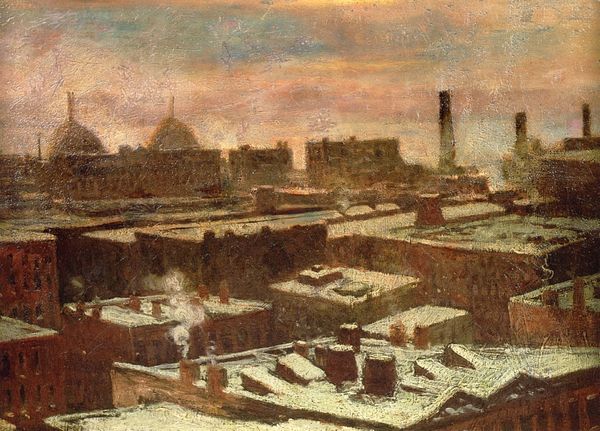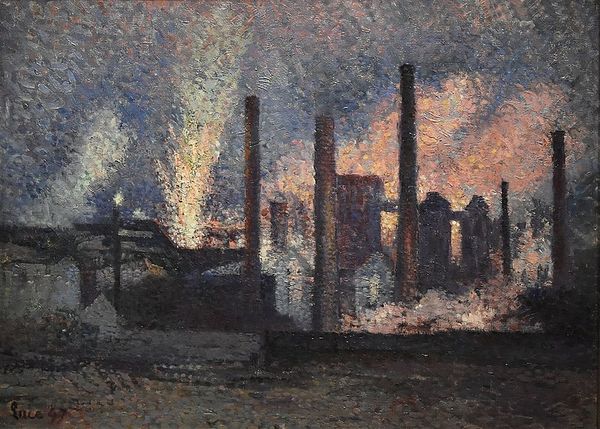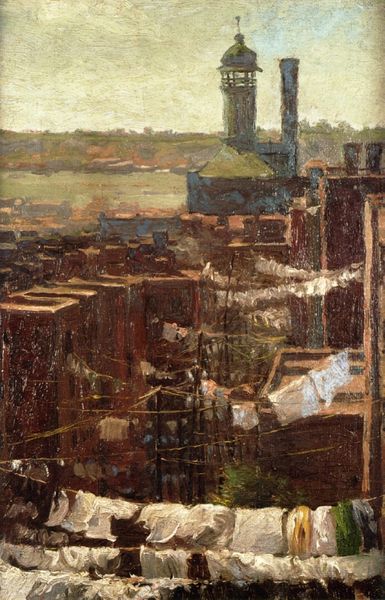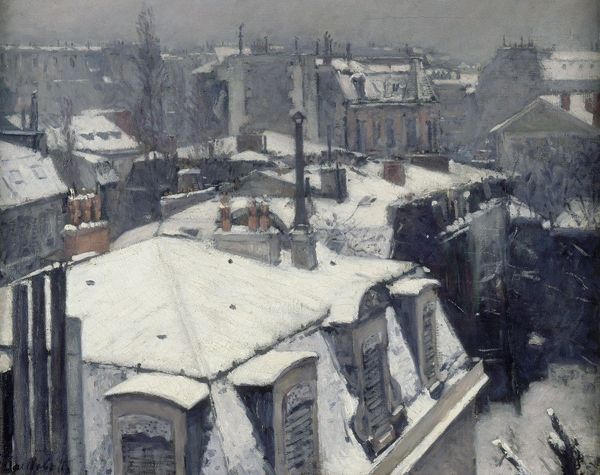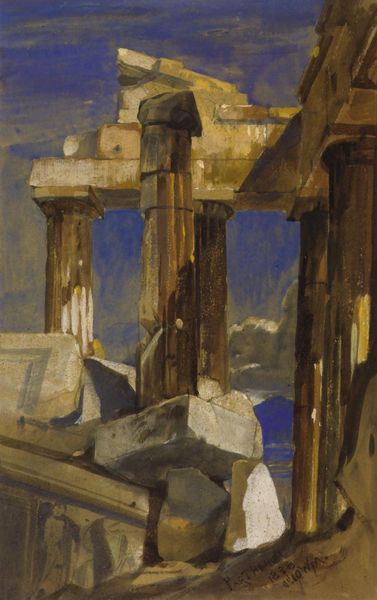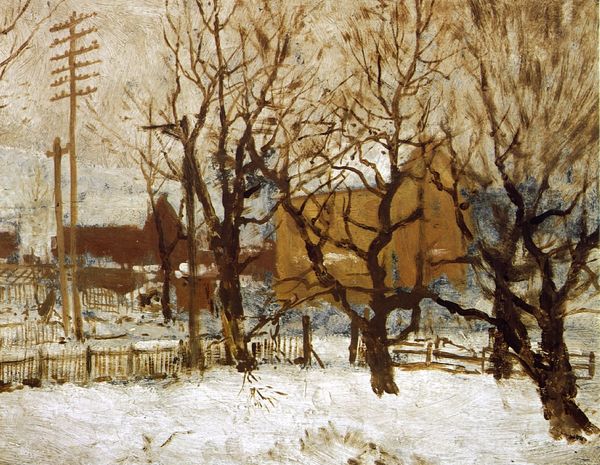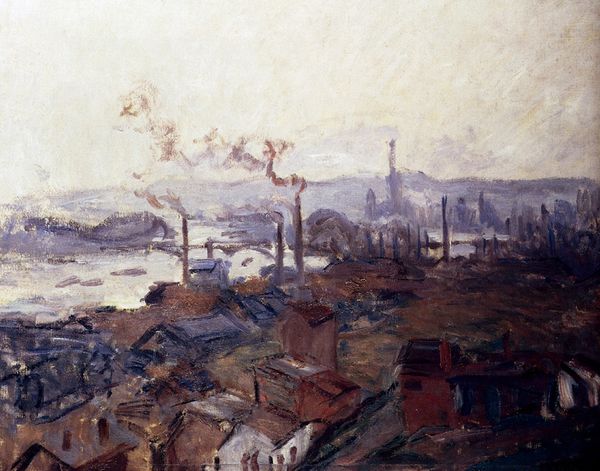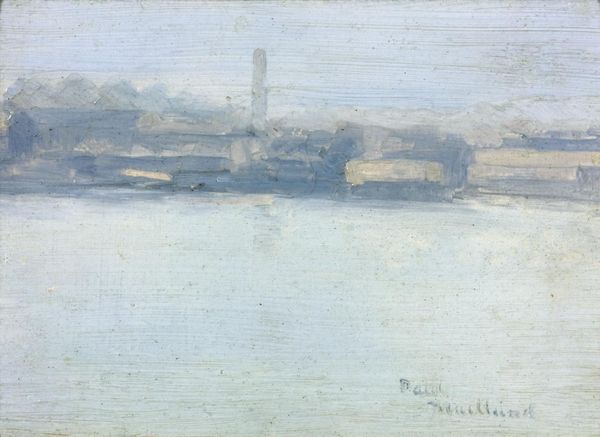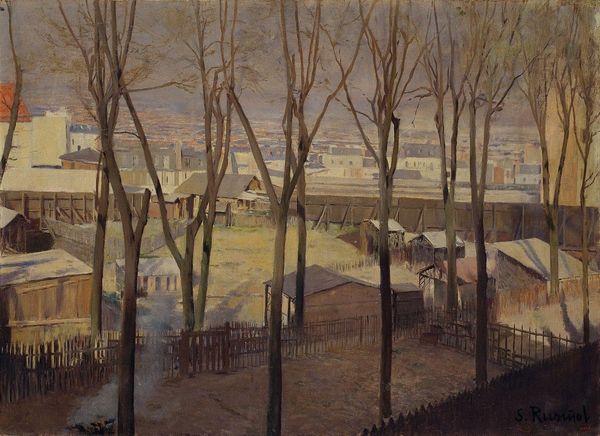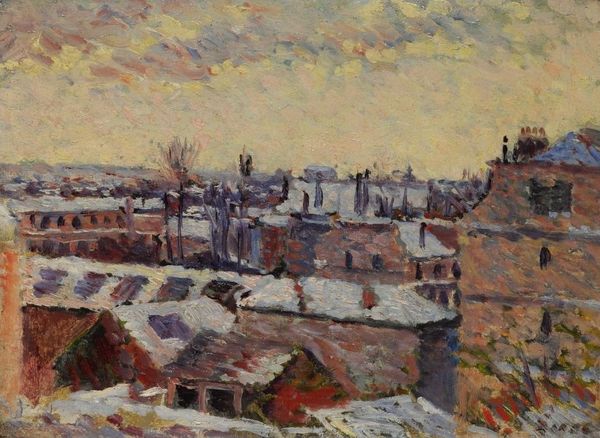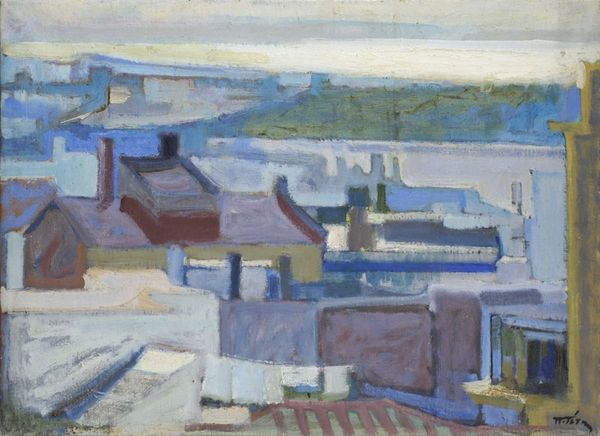
painting, plein-air, oil-paint
#
painting
#
impressionism
#
plein-air
#
oil-paint
#
landscape
#
winter
#
impressionist landscape
#
oil painting
#
cityscape
Dimensions: 60 x 72.5 cm
Copyright: Public domain
Editor: Gustave Caillebotte’s "Rooftops in the Snow, Paris," painted in 1878 with oil, presents a striking scene. There’s almost a sense of industrial bleakness amidst the soft snow, wouldn't you agree? How do you interpret this work within its historical context? Curator: The bleakness is indeed a key element, and it's crucial to understand the socio-political landscape of Paris at this time. The Impressionists often focused on modern life, but Caillebotte, with his privileged background, provides a unique lens. Consider the rooftops themselves: they are not the grand boulevards Haussmann was building, but rather a view of working-class Paris, gritty and defined by labor. What do you make of the chimneys dominating the scene? Editor: They’re incredibly prominent. They draw your eye more than any natural element. Were industrial themes becoming more common in art at the time, a reflection of changing societal values perhaps? Curator: Absolutely. The rise of industry significantly altered the urban fabric and, consequently, artistic subjects. But Caillebotte isn't just documenting; he is also framing a perspective, literally. He’s showing us the city from an elevated position, a position of power and observation. Do you think this perspective might shape how we, as viewers, engage with the scene? Editor: It gives a sense of detachment, I think. It's almost voyeuristic, like we're looking down on this world rather than participating in it. It definitely changes the mood of a winter cityscape compared to, say, Monet. Curator: Precisely. The composition and perspective implicate the viewer. Think about the Salon system, too. An image like this, shown there, enters into a specific kind of public dialogue, pushing the boundaries of acceptable subject matter. Editor: That's fascinating. It’s more than just a pretty snow scene; it's a statement about class, industrialization, and the role of the artist. Curator: Exactly. Considering those angles truly enriches our appreciation.
Comments
No comments
Be the first to comment and join the conversation on the ultimate creative platform.
